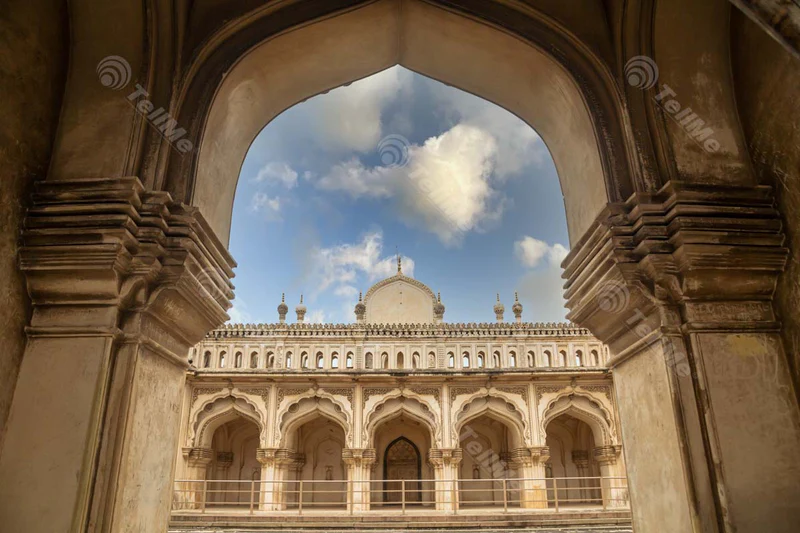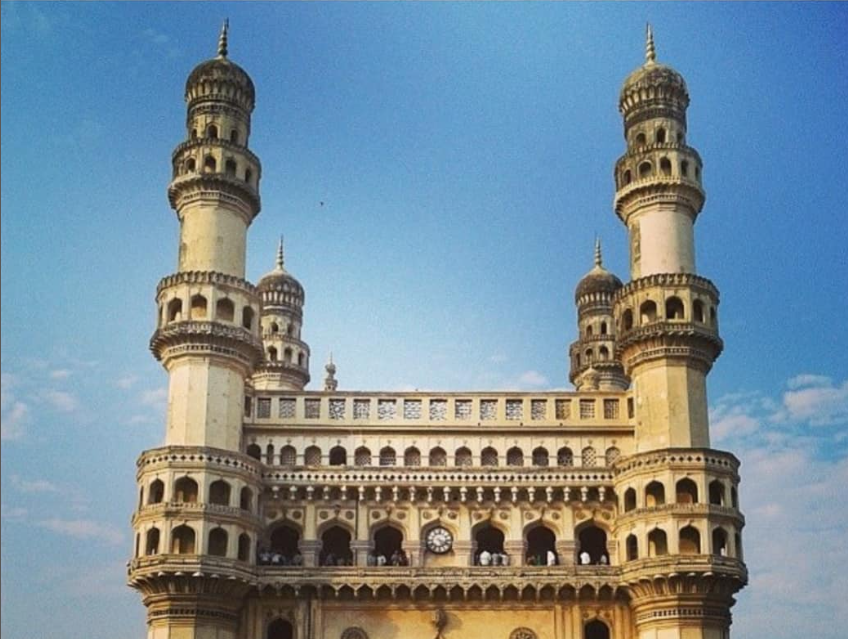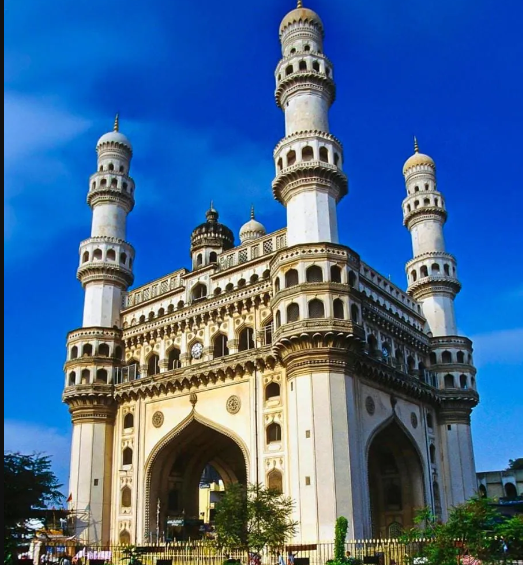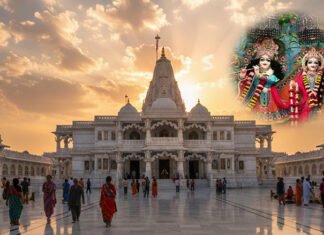Introduction:
Hyderabad the City of Pearls, is a vibrant blend of ancient traditions and modernity, where historical monuments stand alongside contemporary structures. Among its numerous landmarks, the Charminar stands out as the city’s most iconic symbol. This magnificent edifice, built over four centuries ago, continues to draw tourists, historians, and photographers from all over the world. In this extensive blog post, we will delve deep into the history, architecture, cultural significance, and contemporary relevance of Charminar. We will also explore nearby attractions, provide practical visitor information, and share insights to help you make the most of your visit to this architectural marvel.
Historical Background
The Charminar was constructed in 1591 by Muhammad Quli Qutb Shah, the fifth ruler of the Qutb Shahi dynasty, to commemorate the founding of Hyderabad and to mark the end of a deadly plague that had ravaged the city. The name “Charminar” is derived from two Urdu words: ‘Char,’ meaning four, and ‘Minar,’ meaning towers, reflecting the structure’s four towering minarets.
The Legend Behind Charminar’s Construction
Legend has it that Quli Qutb Shah prayed for the end of the plague and vowed to build a mosque at the very place where he prayed. The Charminar, with its four grand minarets and strategic location at the intersection of Hyderabad’s historical trade routes, was designed to be both a place of worship and a symbol of the city’s resurgence.
Foundation and Planning
Charminar was meticulously planned and constructed using granite, limestone, mortar, and pulverized marble. It was strategically placed at the center of the city, aligning with the cardinal points, which ensured that it was accessible from all directions. This strategic location also made it a focal point for the city’s bustling trade and commerce
Architectural Marvel

Also Read: Experience the Magic of Wonderla Hyderabad: Rides, Shows, and More
Charminar is an exquisite example of Indo-Islamic architecture with Persian influences, reflecting the aesthetic sensibilities of the Qutb Shahi dynasty. The structure is a square edifice with each side measuring 20 meters, and four grand arches facing north, south, east, and west. Each corner of the square structure is adorned with a minaret, soaring to a height of 56 meters, making Charminar a visually striking landmark.
Key Architectural Features

Also Read: The Ultimate Hyderabad Trip: A Comprehensive Guide to Exploring the City’s…
- Minarets: Each of the four minarets has elaborate decorations and a bulbous dome atop it. The minarets are double-storied and have balconies offering panoramic views of the city. Each minaret is accessible via a spiral staircase with 149 steps.
- Arches: The four grand arches are not merely structural elements but serve as gateways to the monument. Ornate stucco designs cover these arches, displaying superb craftsmanship and detailed details.
- Balconies and Galleries: Inside, the monument features two floors with open spaces and balconies that allow ample ventilation and light. The first floor hosts a small mosque, a serene space that continues to be used for prayers.
Stucco Decorations: The stucco work on the arches and minarets highlights the fine Persian art influence. Intricate floral motifs, geometric patterns, and Quranic inscriptions adorn the surfaces, adding to the monument’s aesthetic appeal.
Symbolic Elements
The four minarets are said to represent the first four caliphs of Islam, symbolizing the Islamic foundation upon which the city was built. The structure’s alignment with the cardinal points signifies the cosmopolitan nature of Hyderabad, welcoming people from all directions and backgrounds
Cultural and Historical Significance

Charminar is not just a historical monument but also a vibrant cultural hub. Over the centuries, it has witnessed numerous Charminar historical events, cultural exchanges, and social gatherings. It stands as a symbol of Hyderabad’s rich heritage, blending the city’s diverse cultural and religious traditions.
Cultural Hub: The area surrounding Charminar, particularly the bustling Laad Bazaar, has been a center for trade and commerce since the time of its construction. Laad Bazaar, famous for its bangles, jewelry, and traditional Hyderabadi artifacts, reflects the city’s vibrant culture and entrepreneurial spirit.
Religious Significance: The Charminar houses a mosque on its second floor, which continues to be a place of worship. The monument’s construction at the heart of the city underscores its role as a spiritual and community center. The nearby Mecca Masjid, one of the largest mosques in India, further enhances the area’s religious significance.
Historical Events: Charminar has been a silent witness to numerous historical events, from the reign of the Qutb Shahi dynasty to the Mughal conquest and the British colonial period. It has seen the city grow and transform, maintaining its significance through changing times and regimes.
Visiting Charminar
Location: Charminar is located in the old city of Hyderabad, at the intersection of four bustling roads. Public transit, such as buses, taxis, and autorickshaws, makes it easily accessible.
Timings:
The monument is open to visitors every day from 9:30 AM to 5:30 PM. It is advisable to visit early in the morning or late in the afternoon to avoid the midday heat and crowds.
Entry Fee:
- Indian Citizens: INR 25
- Foreign Tourists: INR 300
Best Time to Visit:
The best time to visit Charminar is during the cooler months from October to March. Early mornings or late afternoons are ideal for avoiding the heat and enjoying a leisurely exploration of the monument.
Guided Tours: You should think about hiring a local guide to understand the historical and architectural significance of the Charminar properly. Guided tours provide valuable insights and interesting anecdotes about the monument’s history and cultural relevance.
Nearby Attractions
- Mecca Masjid: Located just a few hundred meters from Charminar, Mecca Masjid is one of the largest mosques in India. Built with bricks brought from Mecca, the mosque is an architectural marvel and a serene place of worship.
- Laad Bazaar: Adjacent to Charminar, Laad Bazaar is famous for its bangles, jewelry, and traditional Hyderabadi artifacts. The vibrant market lanes offer a unique shopping experience, allowing visitors to take home a piece of Hyderabad’s rich culture.
- Chowmahalla Palace: A short drive from Charminar, Chowmahalla Palace showcases the grandeur of the Nizam era with its splendid architecture, royal artifacts, and lush gardens. It provides a glimpse into the opulent lifestyle of the Nizams of Hyderabad.
- Salar Jung Museum: One of India’s largest museums, the Salar Jung Museum houses an extensive collection of art, antiques, and manuscripts from various periods and regions. It is a treasure trove for history and art enthusiasts.
- Badshahi Ashurkhana: This ancient building, used for mourning ceremonies during Muharram, features intricate tile work and is a significant site for the Shia Muslim community.
- Purani Haveli: Another historical site, Purani Haveli was once the residence of the Nizams. It houses a museum with a fascinating collection of artifacts, including the world’s longest wardrobe.

Also Read : Golconda Fort Hyderabad: The Heart of Hyderabad’s Regal Past
Tips for Visitors
- Dress Modestly: As Charminar is a place of historical and cultural significance, dressing modestly is recommended. Visitors should avoid wearing revealing clothing out of respect for the local culture and religious sentiments.
- Stay Hydrated: Drink plenty of water because Hyderabad may get very hot, especially in the summer.
- Photography: Charminar offers excellent photo opportunities, especially during sunrise and sunset when the lighting enhances its architectural beauty. Capture the monument from different angles, including the bustling streets and vibrant market scenes.
- Local Delicacies: Don’t miss trying the local street food around Charminar. From the famous Hyderabadi biryani to delectable kebabs, samosas, and sweets, the area is a food lover’s haven.
- Respect Local Customs: When you visit places of worship and engage with the community, show respect. Show respect when visiting religious sites and interacting with locals.
- Security Check: Be ready for an inspection by security personnel at the door.. Large bags and backpacks are usually not allowed inside, so it’s best to carry only essential items.
Conclusion
Charminar stands as a timeless symbol of Hyderabad’s rich history, architectural brilliance, and cultural vibrancy. It is a monument that has witnessed centuries of change, yet remains steadfast as the heartbeat of the city. Whether you are a history enthusiast, architecture lover, or a traveler seeking to experience the essence
Also Read: Everything You Need to Know for an Epic Ramoji Film City…
Frequently Asked Questions (FAQs)
A: Yes, The second floor of Charminar does indeed include a mosque, and prayers are still held there.
A: Charminar serves as a cultural hub, with the surrounding area being a center for trade, commerce, and festivals. It reflects the city’s rich heritage and diverse traditions.
A: Yes, Charminar is a focal point for various cultural festivals and events, such as Eid, Diwali, and Bonalu, which highlight the city’s cultural diversity and communal harmony.
A: Visitors should dress modestly out of respect for the local culture and religious sentiments. Avoid wearing revealing clothing.
A: The four minarets symbolize the first four caliphs of Islam and represent the Islamic foundation of Hyderabad. They also highlight the historical and cultural variety of the city.











